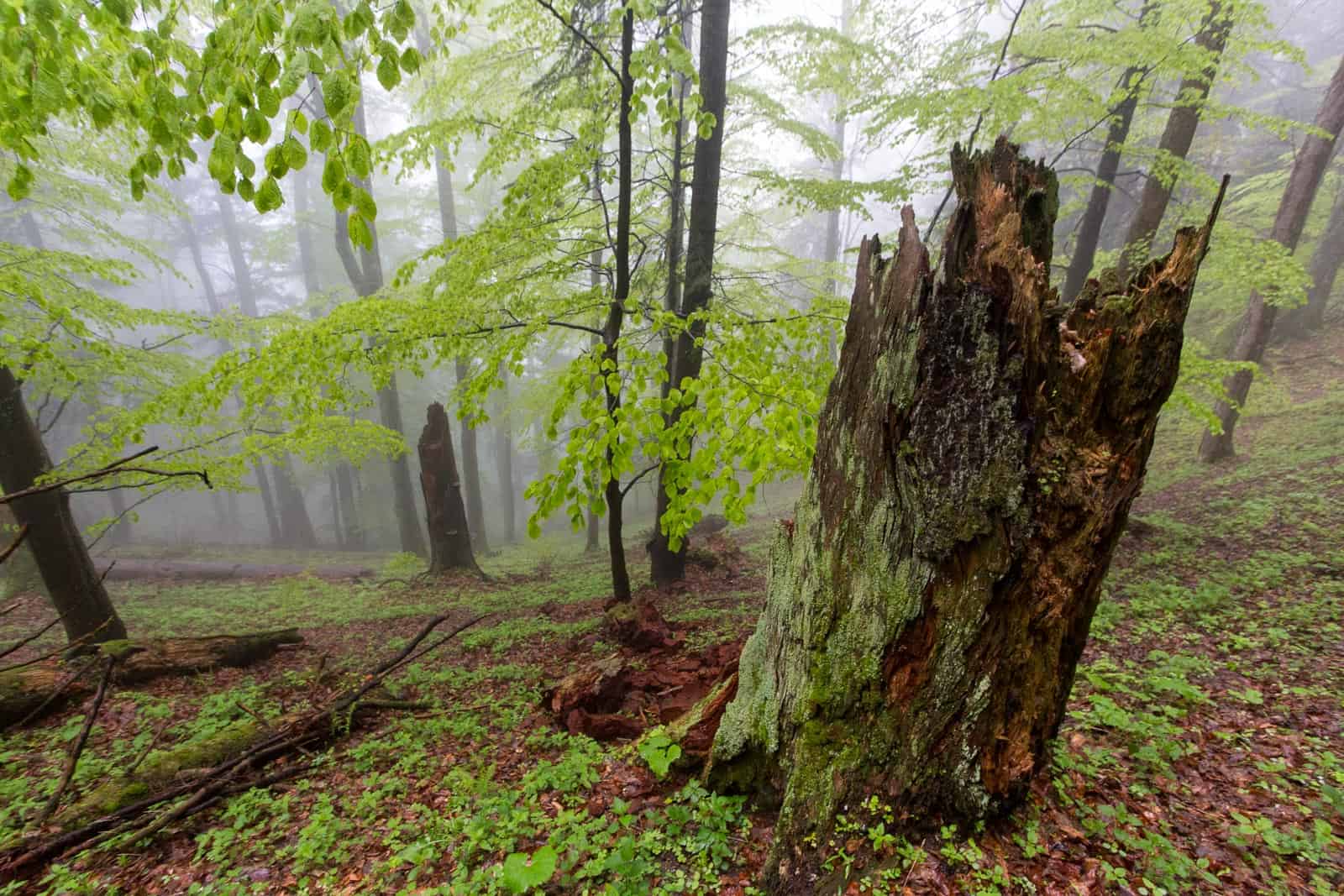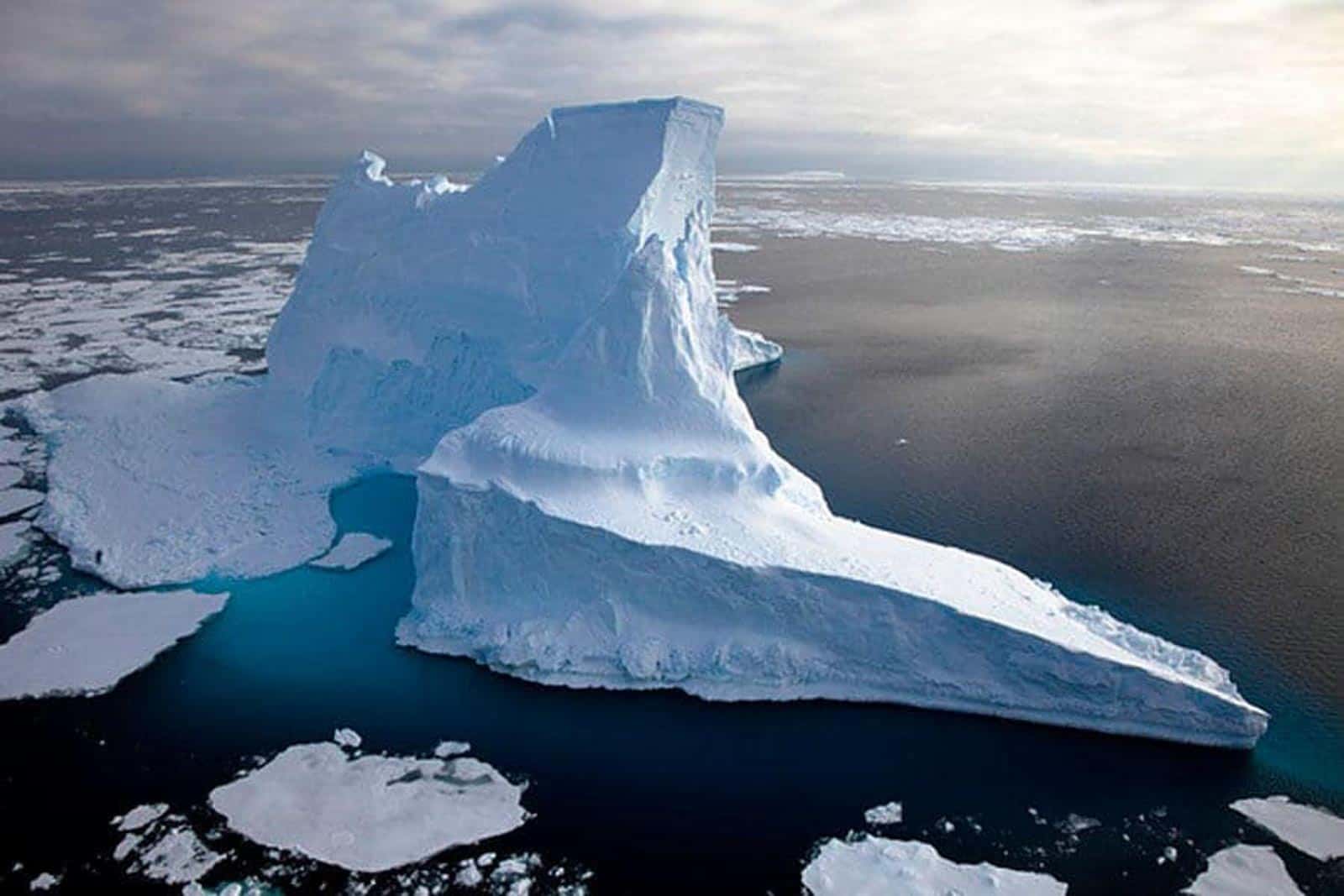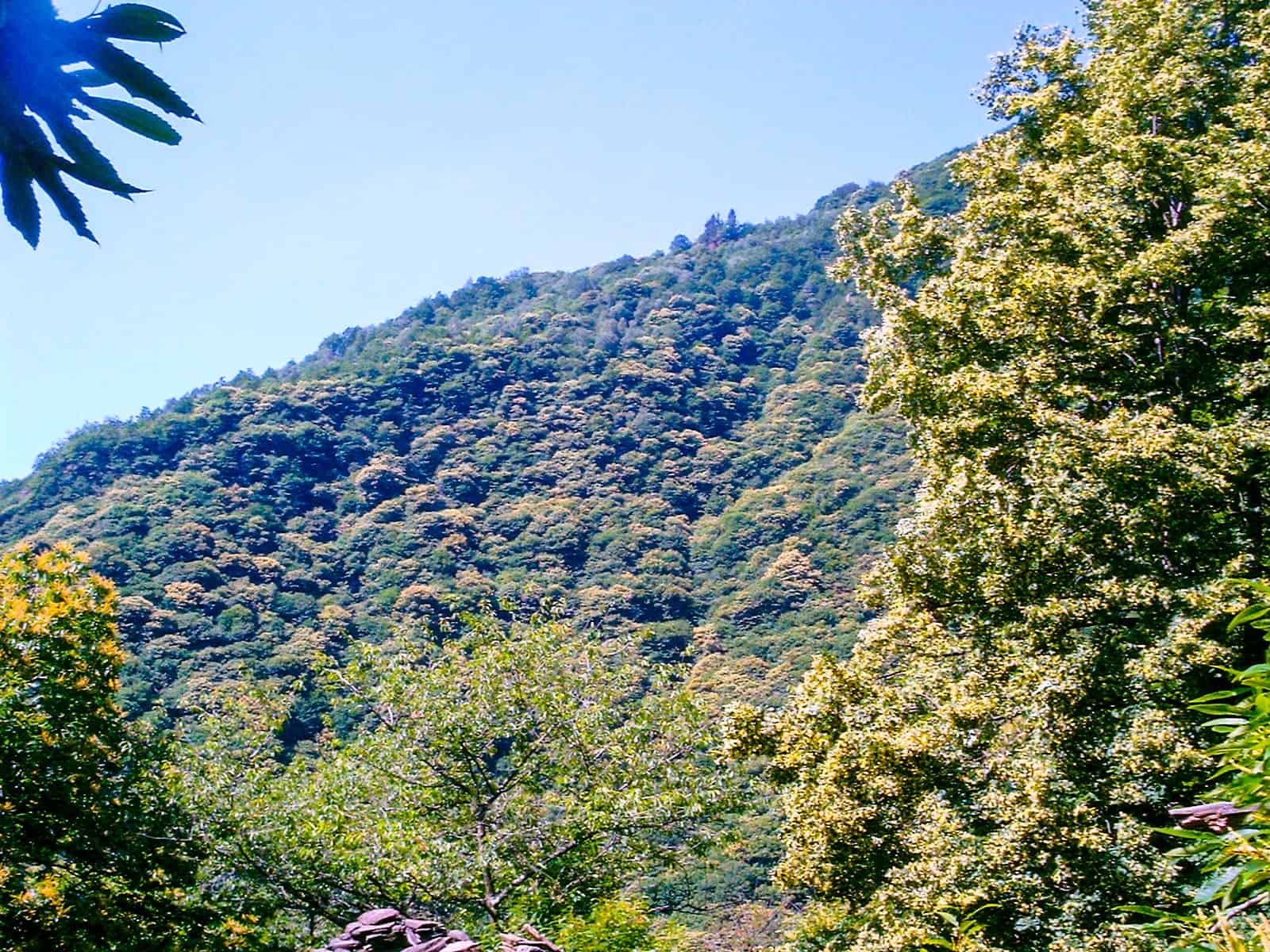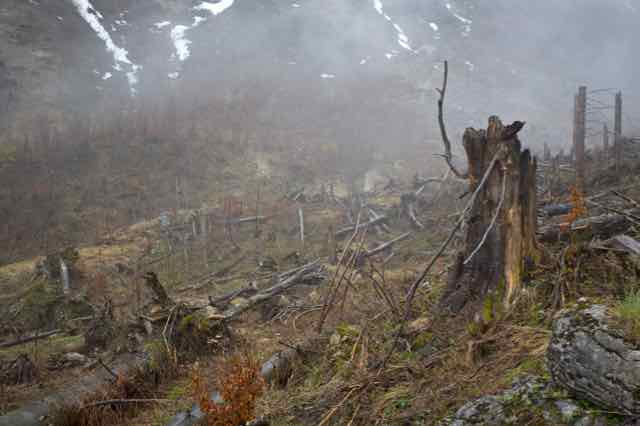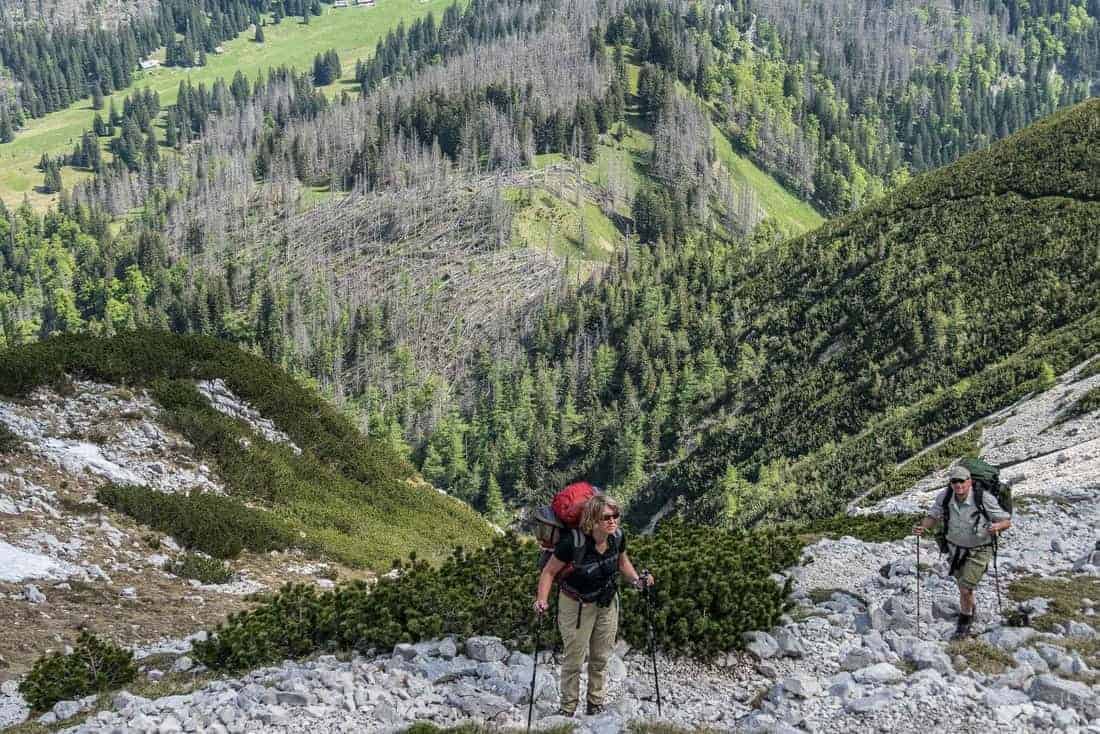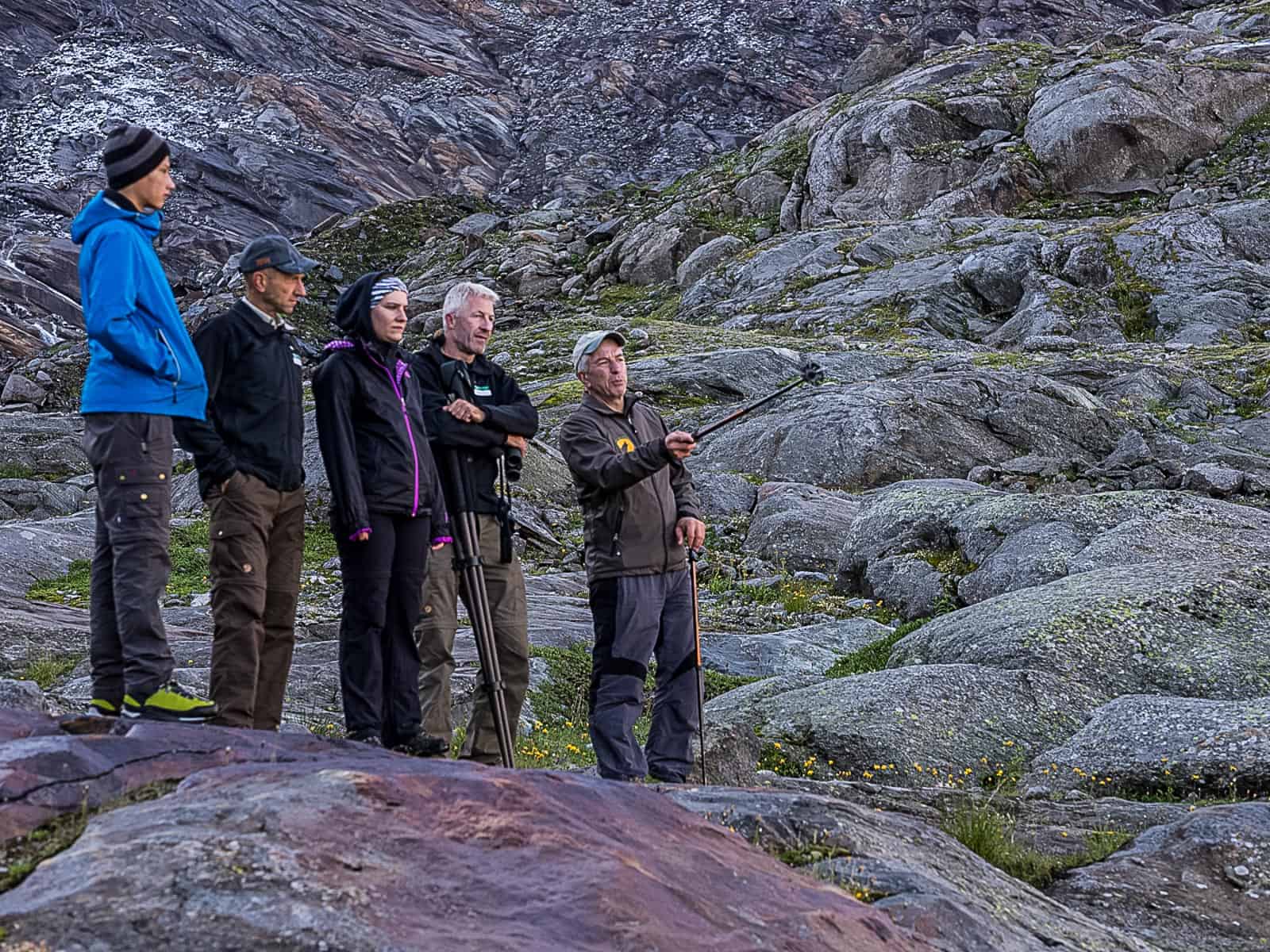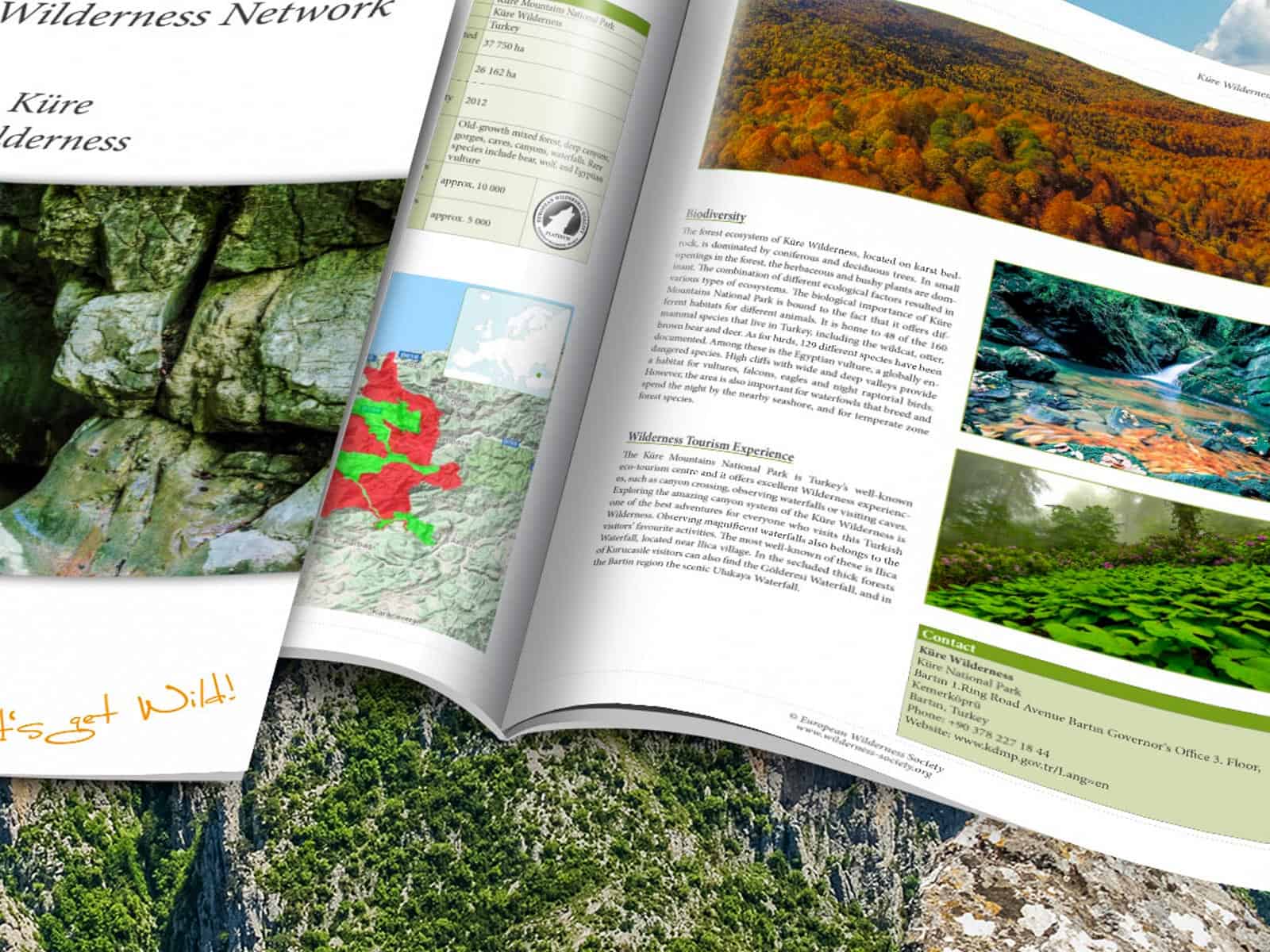Wilderness is a window to the past
When I was young, my great-grandfather, a forester, told me that this Wild Valley used to be even more wild when he was my age. No roads, no logging, no air pollution. Even hunters only used this land rarely. It was too remote and wild. To get to this Wild Valley was at least a 2-day trip one way, the round trip taking a minimum of 4 days. One would usually use a pack horse to carry food and an axe to clean the trail, all while sleeping in the forest.
What we have lost in the Wild Valley
The lower part of the foothills was covered by lowland broadleaf forest. Here, already in that time, dirt roads offered access to the forest, and thus an opportunity for exploitation. The flatland with a meandering river made access for locals easier. This land offered timber, limited grazing and venison. The small canyon stopped foresters and loggers with their progress. Further on, only a narrow path lead to the mountains at the horizon. It was still 25 km to get to the mouth of Wild Valley. In dense forest, with many giant standing and fallen trees, swamps, and a network of small rivers and creeks, the progress was very slow. The narrow trail was often blocked by fallen trees, particularly after winter or wind storms, slowing progress and sometimes causing an extra night to be spent in the forest.
The usual place we stayed overnight was a small cave offering a dry shelter from the rain. A small creek nearby offered drinking water and a small alluvial meadow offered food for the horses. The next afternoon, the team usually reached the mouth of Wild Valley and within 5 km, we got to a place where a small log cabin stood. The Wild Valley continued an additional 17 km before finally reaching the tree line. And after an additional 12 km, the trail got to a grassy pass squeezed between steep rocky ridges.
That was wild land, that was Wilderness.
Please also read: Is Wilderness Our Home?
Dynamics of change
Since then, many things have changed. When I was young, the forest road already reached the mouth of the Wild Valley. The road brought footpaths, loggers, hunters and shepherds. A small canyon slowed down the exploitation of the forest in front of the mouth of Wild Valley. Erratic boulders also caused big detours. But the most demanding and dangerous obstacles were river crossings. Yet, after some years, bridges also solved this challenge.
Along the road, old forest quickly disappeared, including monumental trees. The experience described by my great-grandfather was gone. But I was still lucky. For me, my real Wilderness still began here at a small parking lot at the place where rotten remnants of the old log cabin reminds one of the wild past. This was the spot where my great-grandfather traveled to with horses for 2 days. Despite what was lost, I grew up exploring my Wild Valley – 12 km of old-growth forest and an extensive, spectacular alpine zone.





The speeding up of change
However, even this changed in front of my eyes. By the time I was in my forties, modern bulldozers entered the valley and made track roads for an additional 5 km. That dramatic and fast change was the seed of the concept to protect the Wild Valley. Unfortunately, it was too late for the Wilderness. Too late particularly for the generation of my great-grandfather. He cried when he visited the areas freshly impacted by bulldozers and when seeing the cutting of many of his favourite mammoth trees. But I did not cry. I was happy that this violent forest exploitation would launch a public campaign to protect the last remnants of this wonderful Wilderness.
Only later on did I realize why my great-grandfather cried. It was because he was luckier than me. He experienced that land as a true Wilderness while I did not. He remembered all those days spent exploring the inaccessible Wild Valley and enjoying the largest and most magnificent piece of Wilderness in central Europe. I lost that opportunity and nobody else will have the option to experience such large and wild corner of Europe again.
Regardless, I was still a lucky man, but I realised this only later. Despite a strong fight to declare that area as a strictly protected land, several gravel roads were constructed during the lengthy process, roads later fixed in place by asphalt. Despite its present legal protection, Wild Valley lost its essence of Wilderness. Finally, only very little Wilderness remained. A 10 km roadless valley with remnants of old-growth forest and alpine meadows.
This story could happened in any corner of Europe. Somewhere three centuries ago, somewhere a millenium ago and somewhere even more. Nevertheless, Europe used to be like that. Few, really few spots are still like that left, but they are rapidly disappearing,

Wilderness remnants in the Wild Valley
Now, after 50 years of exploring this Wild Valley I started to better understand what I missed and what my children and grandchildren are and will be missing. They also love this place, especially the upper part of Wild Valley. They very proudly show that land to their friends. This, now strictly protected land is a window to the past for them, a window to see and experience how wild and beautiful the valley was, and partially still is. We are nevertheless still very lucky. We were born before the entire Wild Valley was colonised, like has happened in many other spots throughout Europe.
The network of protected Wilderness in Europe is, in addition to many other values, a window to the past for younger generations. Giving them opportunity to see and imagine how wonderful this Wilderness once was. The process that this place launched in their minds caused some of them to become Wilderness advocates.

